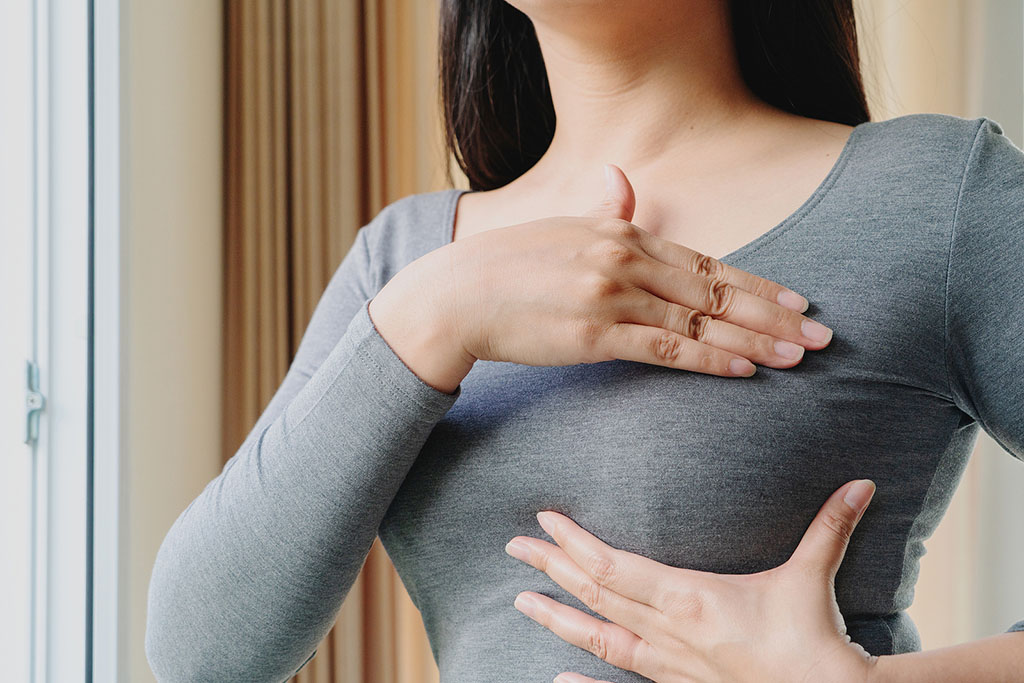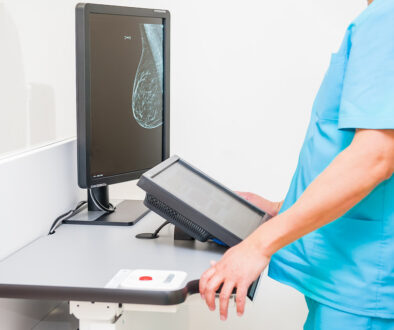Are You Doing Your Self-Breast Exam Correctly? Follow Our Checklist
If you want to be proactive in your breast health, adding a monthly self-breast exam to your wellness routine is a beneficial step towards that goal. While self-breast exams aren’t meant to replace mammograms or clinical breast exams, they can help you understand how your breasts normally look and feel, so you can more easily detect changes or irregularities that might need further examination from your healthcare professional.
At Associates in Women’s Healthcare, we offer state-of-the-art 3D digital mammography that you can schedule the same day you have your annual exam. This way, you not only receive this important test, but you also benefit from the convenience of scheduling it at a time that works for you.
In this article, we’ll share how to perform a self-breast exam, consider how often you should check for breast lumps, and discuss when to see a doctor about a lump in your breast.
How to Check for Breast Lumps with a Self-Breast Exam
In addition to a healthy diet, regular exercise, and other ways to improve your breast health, a monthly self-breast exam can help you maintain breast health by detecting changes and discussing them with your doctor before they become advanced.
You perform a breast self-exam by checking your breasts physically and visually each month for lumps or abnormalities. Being aware of how your breasts typically look and feel can help you spot any changes early.
While breast self-exams are not meant to replace mammograms as a screening tool, they are an important part of maintaining breast health. You should also see your healthcare provider for regular breast cancer screenings.
How to Do a Self-Breast Exam
You can perform a self-breast exam at home one of three ways: standing up, lying down, or looking in a mirror.
Breast Self-Exam While Standing
- Use your right hand to examine your left breast, then your left hand to examine your right breast.
- Press on every part of each breast with the pads of your three middle fingers, first with light pressure, then medium, then firm.
- Use a circular pattern to cover every spot, and feel for lumps, thick spots, hardened knots, or other changes.
- You should also check the tissue near your armpit and the area under and around your nipples, and squeeze the nipple to check for discharge.
- You can also do this while in the shower.
Breast Self Exam When Lying Down
- Lie down, put a pillow under your right shoulder and place your right arm behind your head. When you’re lying down your breast tissue spreads more evenly, which can help when feeling for changes.
- Using the same technique as the one above, use your left hand to check your right breast, then switch the pillow from your right shoulder to your left shoulder, and repeat the steps for your left breast.
- Don’t forget to check your armpit tissue and the area under and around your nipples.
Breast Self-Exam in Front of a Mirror
- Looking in a mirror with your arms down by your side, visually check for changes in the contour and shape of your breasts, including:
- Breast swelling
- Skin dimpling
- Puckering
- Changes in your nipples
- Other irregularities.
- Then raise your arms over your head and check for these changes again.
- Next, put your hands on your hips and press firmly to flex your chest muscles and look for any changes again.
- Keep in mind that your left and right breast may not be identical in size or shape. Minor differences are common and usually not a cause for concern.
How Often Should You Check for Breast Lumps?
While at home self-breast exams are not meant to be a replacement for regular breast cancer screening methods, checking for lumps monthly can be helpful for your breast health.
Many diagnosed breast cancers are detected by women who initially felt a lump. That said, not all lumps are cancerous. Doing a monthly self-exam helps you understand what’s normal for your breasts, so that you can consult with your healthcare provider if you notice changes.
If you’re still menstruating, it’s best to perform a breast self-exam a few days after your period ends. If you’re postmenopausal or have very irregular periods, choose a specific day of the month, and perform the exam on the same day each month.
Are All Breast Lumps Cancerous?
Lumps in breast tissue are normal and not necessarily a cause for concern. Lumpy breasts can sometimes be attributed to benign changes like the presence of fibrous tissue or fluid-filled cysts. According to the National Breast Cancer Foundation, 8 out of 10 lumps are not cancerous.
This is why it’s important to be aware of what’s normal for you, so you can make an appointment with us if you notice changes that worry you.
Clinical breast exams and mammograms can help detect breast cancer early, when it’s at its most treatable stage.
Otherwise, when you get a mammogram depends on your age and other risk factors. If you’ve been told you have dense breasts, you may be at higher risk for breast cancer and need to be screened more often than once per year.
When we work with you to determine how often you should be screened, we take into account your complete medical history. At Associates in Women’s Healthcare, we take time to get to know you not just as a patient, but as a person. It’s only through this partnership that we can truly help you live the healthiest life possible.
Are Benign Breast Lumps Concerning?
Benign breast conditions refer to growths or other breast changes that are not cancerous. In fact, benign breast conditions are more common than breast cancer.
While benign lumps and breast conditions are non-cancerous, some can increase your risk of developing cancer. Consult with your healthcare provider about any changes, lumps or other abnormalities in your breasts as soon as you discover them.
When Should You See a Doctor About a Lump in Your Breast?
As previously mentioned, you should contact your healthcare provider if you notice any changes in your breasts, including:
- Lumps or changes in how your breast tissue normally feels
- Redness, soreness, rashes, or swelling on the breasts
- Dimpling, puckering or other changes in the skin
- Changes in how your nipples look, such as nipple retraction or inversion
- Nipple discharge
Sometimes having your period can affect how your breasts look and feel due to fluctuating hormone levels, which may cause changes in breast size, texture or tenderness.
We can perform a breast exam to determine if a diagnostic test like an ultrasound or a mammogram is necessary.
Associates in Women’s Healthcare: Your Partner in Better Breast Health
A monthly self-breast exam is an important part of maintaining healthy breasts. If you’re still not sure how to perform one after reading the steps above, talk to us. We can make recommendations based on your health history and show you how to do a breast exam correctly.
And remember, while self-breast exams are a good first step in breast wellness, they don’t take the place of regular mammograms, which can usually detect tumors before they can be felt. Contact us today to discuss your breast health or schedule a mammogram.
Key Takeaways:
- Monthly self-breast exams are an important tool for maintaining breast health and noticing any changes early, although they are not a substitute for mammograms or clinical screenings.
- Being familiar with how your breasts normally look and feel makes it easier to detect any unusual changes.
- There are three main ways to do a self-breast exam:
- Standing or in the shower – using your fingers to feel for changes in the breast and armpit area
- Lying down – allows breast tissue to spread evenly for easier detection
- In front of a mirror – check for visual changes like puckering, dimpling, swelling, or nipple changes
- Standing or in the shower – using your fingers to feel for changes in the breast and armpit area
- The best time to perform a self-exam is a few days after your period ends. If you’re postmenopausal or have irregular cycles, choose the same day each month to stay consistent.
Most breast lumps are not cancerous – in fact, 8 out of 10 are benign. However, all lumps or changes should still be evaluated by your doctor.
The content within this article and others on this website is only for educational purposes and should not be considered as medical advice. For any questions or concerns, please consult with your healthcare provider.
=====
Sources:
- National Breast Cancer Foundation: https://www.nationalbreastcancer.org/breast-self-exam/
- Cleveland Clinic: https://my.clevelandclinic.org/health/diagnostics/3990-breast-self-exam
- BreastCancer.org: https://www.breastcancer.org/benign-breast-conditions




